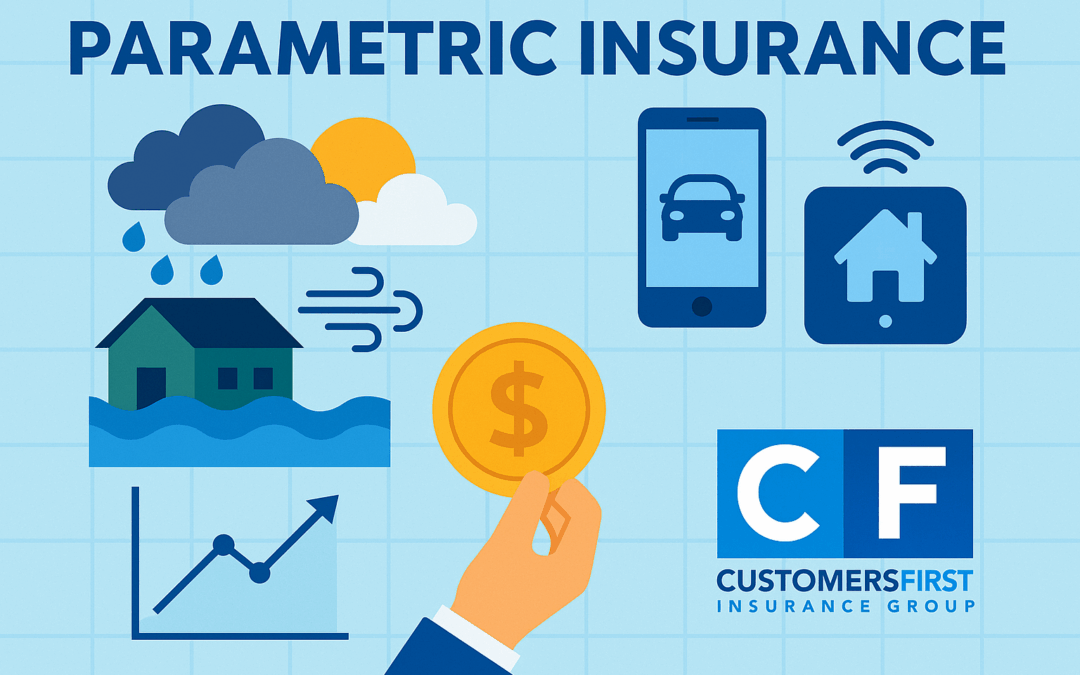The insurance industry is evolving at lightning speed. From parametric insurance that pays out when a specific event occurs, to telematics in auto insurance and smart home devices that prevent costly claims, the future of coverage is becoming faster, smarter, and more responsive to your needs.
In this post, we’ll break down what parametric insurance is, how it works, and why it matters to both businesses and homeowners. We’ll also explore how connected devices are reshaping the way insurers assess risk and deliver value.
What Is Parametric Insurance?
Traditional insurance pays out after a lengthy claims process, which often requires inspections, documentation, and negotiations. Parametric insurance flips this model on its head.
Instead of waiting for an adjuster, payouts are triggered automatically by predefined parameters—for example:
-
Wind speeds over 75 mph at a specific location
-
Rainfall exceeding 10 inches in 24 hours
-
An earthquake above 6.0 magnitude within a set radius
This approach delivers faster claims payments, less paperwork, and greater financial certainty for policyholders.
Why Parametric Insurance Matters in 2025
As climate change drives more frequent and severe natural disasters, traditional insurers are struggling to keep up. Delayed claims and underwriting losses are common in high-risk states.
Parametric insurance offers three key advantages:
-
Speed – Funds are delivered quickly, often within days.
-
Transparency – Clear, objective triggers leave little room for disputes.
-
Resilience – Helps individuals and businesses recover faster after disasters.
This type of coverage is especially valuable for businesses, farmers, and homeowners in regions prone to severe weather.
How Telematics Is Transforming Auto Insurance
While parametric insurance is changing how catastrophic risks are covered, telematics is revolutionizing personal auto insurance.
Telematics devices—or apps on your phone—track driving behaviors like speed, braking, and mileage. Safe drivers can earn discounts up to 30% or more. For insurers, it reduces uncertainty and creates fairer, usage-based pricing.
For customers, telematics means more control over premiums and a direct incentive to drive safely.
Smart Home Devices and Faster Claims
Similarly, smart home technology is reducing claims before they even happen. Devices like:
-
Water leak detectors to prevent flooding
-
Smart thermostats to reduce fire risk
-
Security systems to deter theft
Insurers reward proactive homeowners with discounts and in some cases, parametric-like benefits. For example, a water sensor detecting a leak could automatically qualify you for coverage or reimbursement without the hassle of proving damage later.
The Convergence of Innovation
When you combine parametric insurance, telematics, and smart home devices, a clear picture emerges:
-
Data-driven insights are replacing guesswork.
-
Automation is reducing friction in claims.
-
Personalization is delivering fairer premiums.
These innovations all point toward an insurance industry where protection is proactive, not reactive.
Final Thoughts
Insurance is no longer just about “repair and replace.” It’s about predict, prevent, and respond faster.
-
Parametric insurance gives businesses and homeowners confidence after disasters.
-
Telematics puts safe drivers in control of their auto premiums.
-
Smart home devices prevent losses before they occur.
At Customers First Insurance Group, we help clients understand how these tools can protect their families, homes, and businesses in today’s changing world.
Want to explore smarter coverage options? Get a quote today or call us at 586-221-6870.

